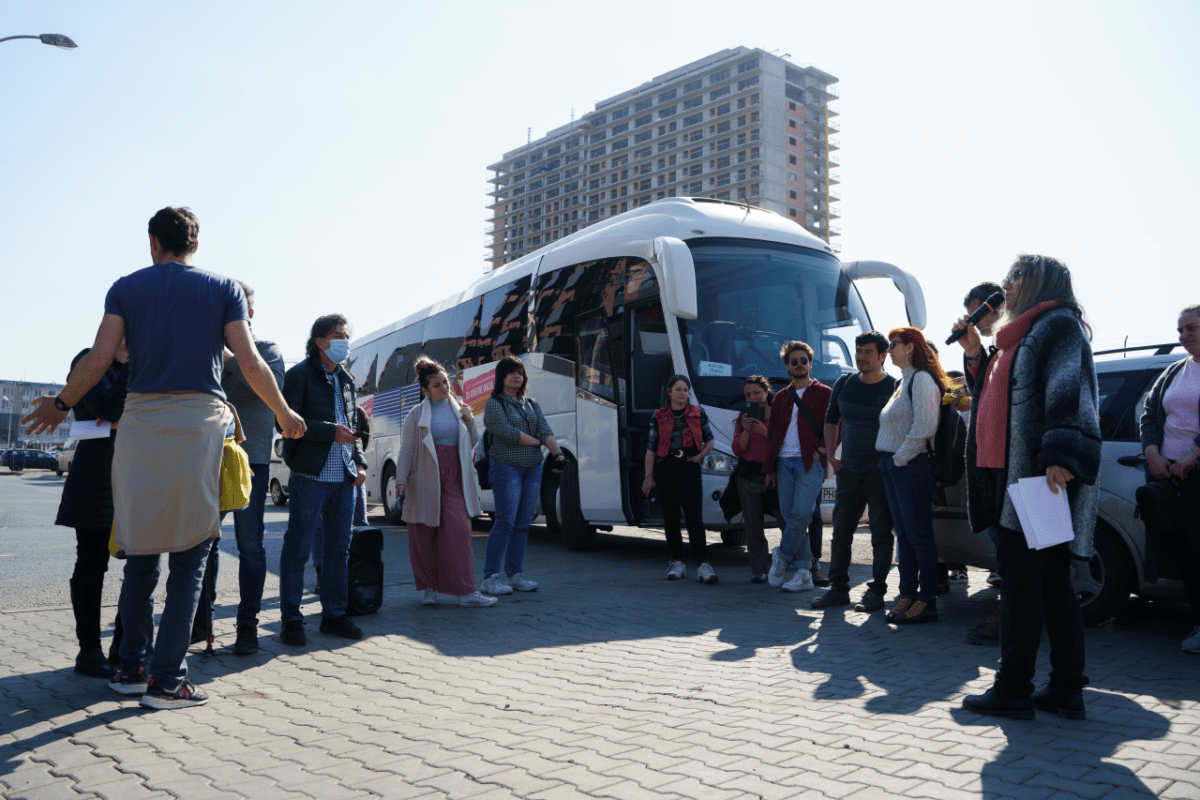On 28th March 2022 the housing justice movement Căși Sociale ACUM! – Social Housing NOW! organized a Housing Action Day event in Cluj-Napoca, a European-wide day of action for housing justice, coordinated by the member groups of the European Action Coalition for the Right to Housing and to the City (EAC). On 28th March, between 15:00-18:00 the members of the Social Housing NOW! movement alongside invited guests and other participants took a bus tour of Cluj-Napoca to explore the local assets of the housing crisis and the need for social housing. The activist city tour was entitled “Missing social housing” – referring back to a banner hung in the city with the same text in December 2021. Below you can experience the tour in written format alongside pictures from the stops.
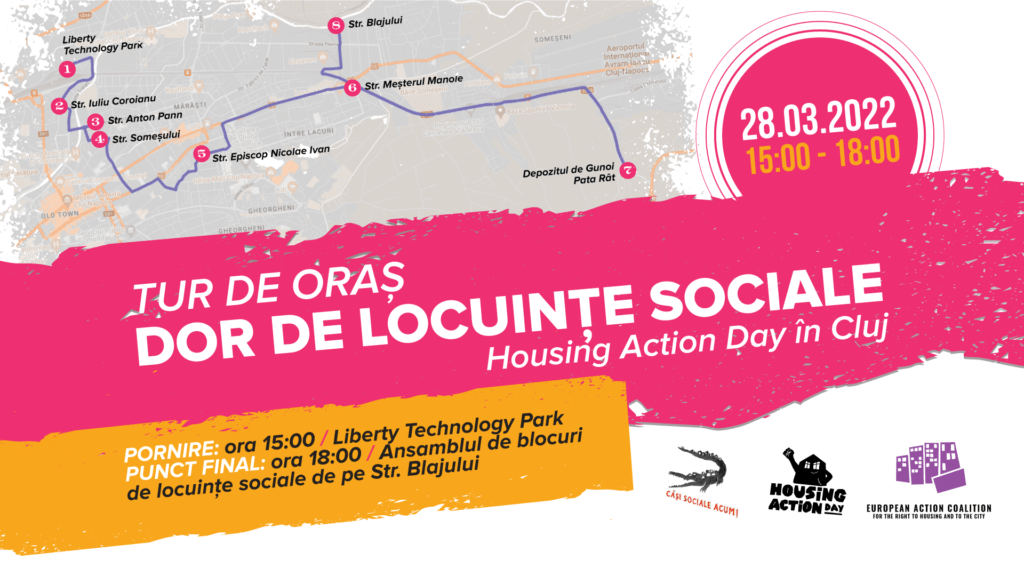
With the city tour, we draw attention to how real estate developments often mean chasing the poorest inhabitants of Cluj out of their already precarious housing, turning them into homeless people. We think about why and how social housing is the solution to forced evictions, but also an important factor of indirect price control on the housing market, because they are non-profit.
To this end we visited together some key points in the central and marginal areas of Cluj, as shown on the map above, and we all participated in a discussion about the city’s urban and housing policies.
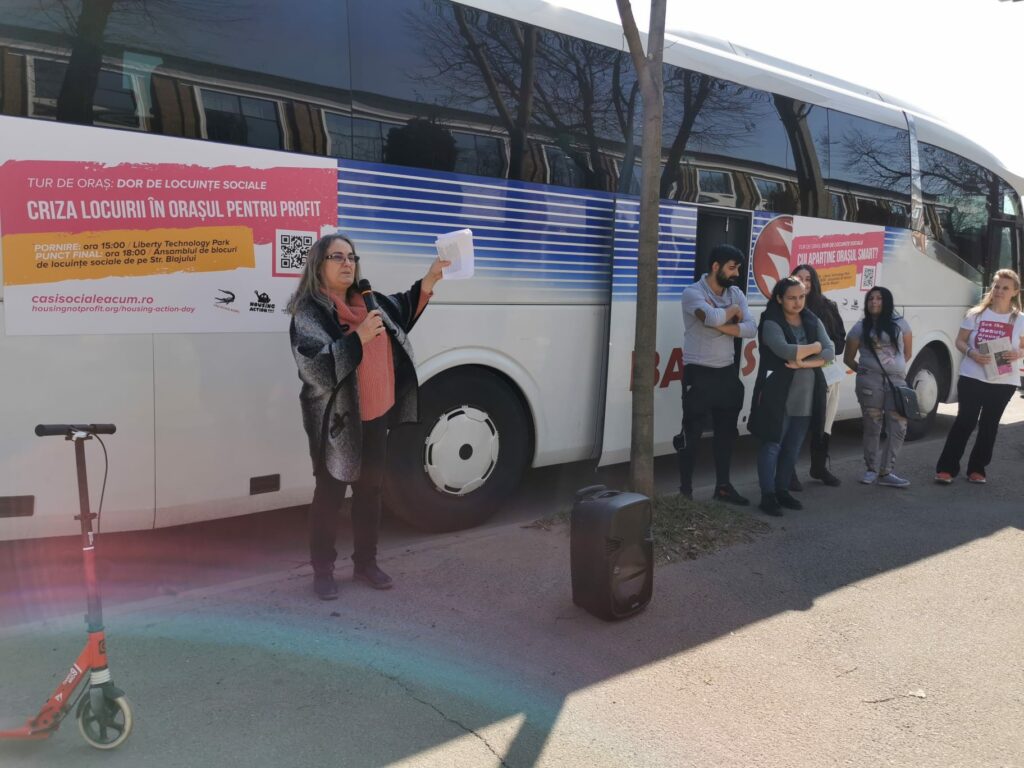
Source: Nóra Ugron
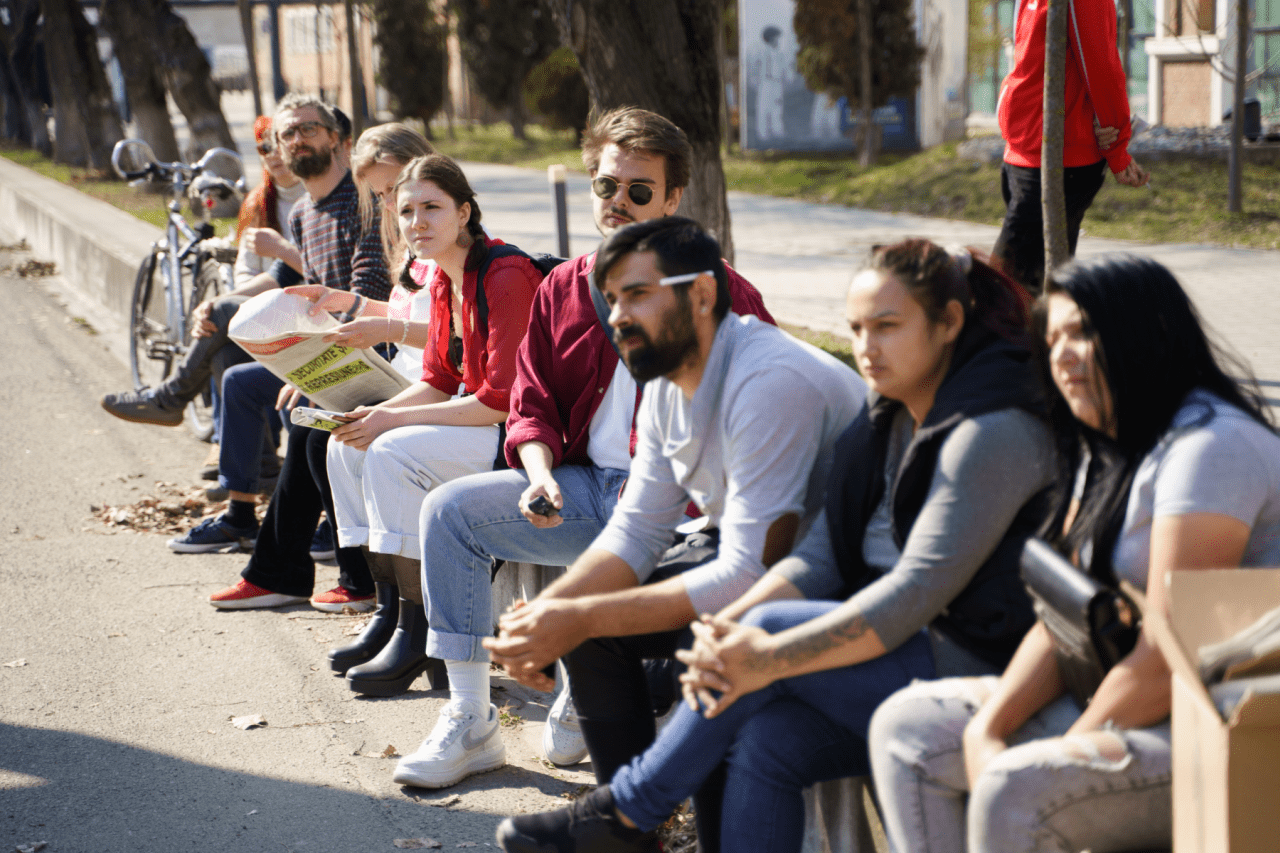
Source: Helga Tóth/Transtelex.ro
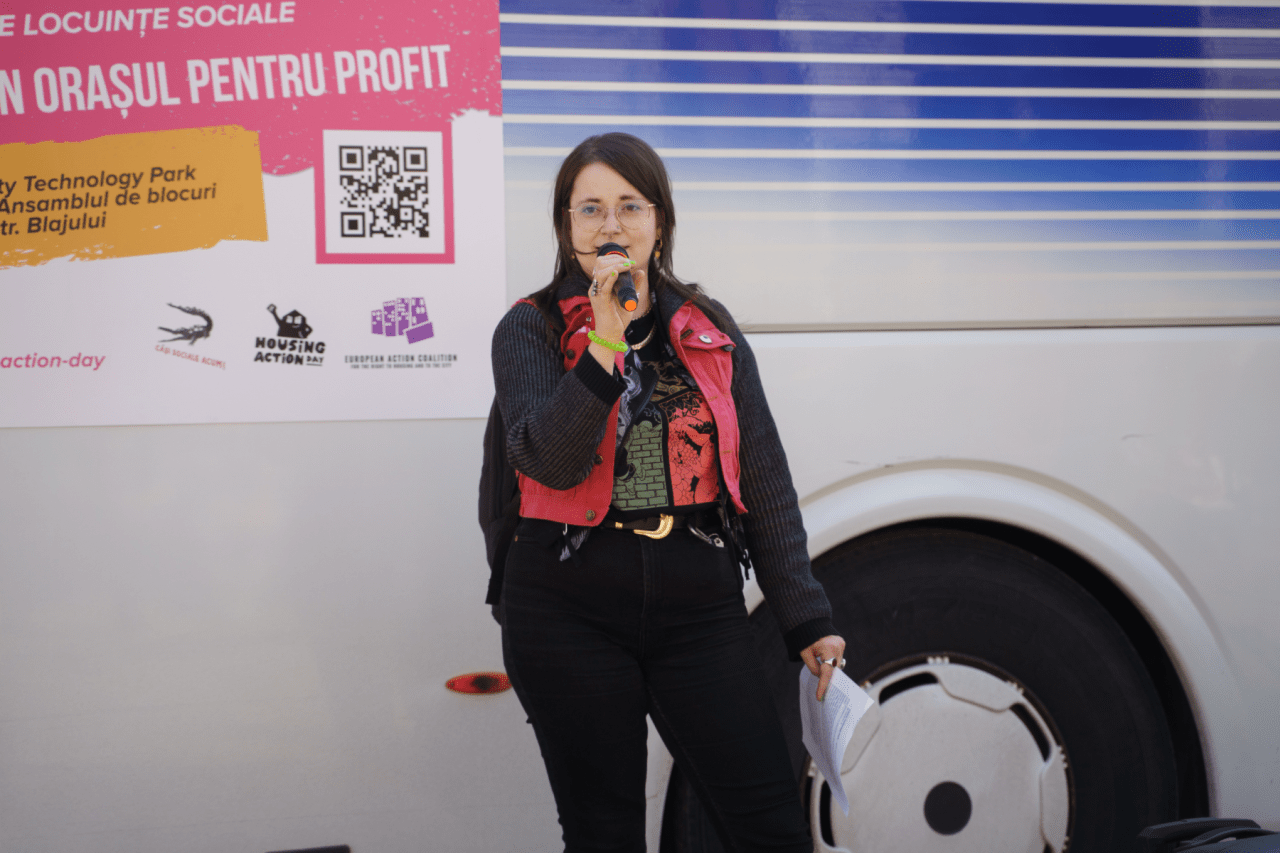
Source: Helga Tóth/Transtelex.ro
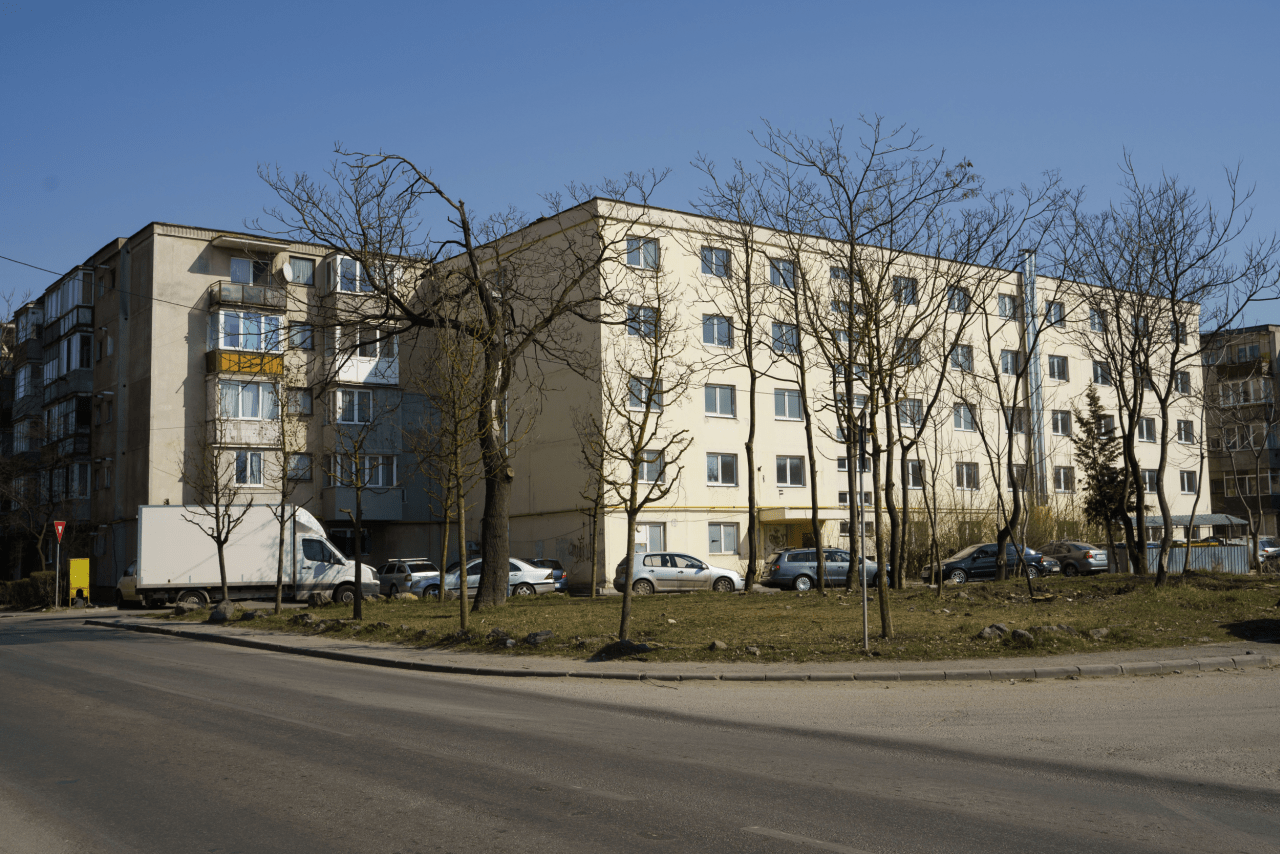
Source: Helga Tóth/Transtelex.ro
First stop: Liberty Technology Park
Manifestations of the housing crisis can differ depending on geopolitical location, however just as the EAC network’s manifesto says – “the causes are the same: it is private property, it is lobby infiltrated politics, it is the growing inequality. In short, it is capitalism. 2021 was just another year of evictions of tenants and small home-owners, of increasing housing costs and gentrification, of growing homelessness, of marginalization of racialized and lower-income populations, of the destruction of alternative ways of life, of land and housing privatizations, of land-grabbing, and the displacement of indigenous communities and of dull city-planning only benefitting capital.” (Read the whole text in Romanian in the 16th edition of our housing justice newspaper, Cărămida [The brick] or in English, Spanish, Castellano, and Romanian on the website of EAC.)
During this guided tour of Cluj-Napoca we will be showcasing a few key locations to better understand the housing situation in the city and various local manifestations of the housing crisis.
We are now in the old Northern industrial area of the city near the former furniture factory Libertatea. This area also used to include the factories: Metalul Roșu, 16 Februarie – Remar, Tehnofrig, and Armătura. The old factories’ land and ruins have become investment prospects for real estate development.
Libertatea factory was privatized in 1994 by Sorin Dan and bought by Ion Sturdza in 2011. The latter then invested in transforming the building into an industrial park through the Friboug Capital Fund, declaring: “The Liberty Technology Park project marks the beginning of the gentrification of this industrial neighbourhood.” In 2019 developer White Star Real Estate bought this office condominium through real estate consulting company Colliers International. In August 2020 SC Liberty Technology Park SRL decided to build a residential complex named Liberty Residential. The construction permit for the two six-story buildings located on Gării street no. 26 was released in November 2021. That same year, on the corner of Gării and Oașului streets, a company named Hexagon District SRL demolished a construction that used to belong to local business TDS Tehnica de Sudură so that they could build a 300 apartment building.
Across the street from Liberty Technology Park, between Gării and Stephenson streets, there’s a five apartment building built in 1970 through the construction trust. After 1995, because people did not have a place to live, an informal settlement formed around the old house and it’s currently under the risk of eviction.
Why did we include this very stop on our “I miss social housing” trail? Next to us in this parking lot we can see a five story building. It used to be a dorm belonging to the “Grupul Școlar de Protecția Mediului” community college and it could be turned into a social housing building. City hall planned to turn it into a kindergarten in 2019, but the plan has been on hold ever since. It’s time for the city hall to announce that they’ll be turning it into a social housing building, especially since they promised to deliver 1,500 social housing units by 2030 while they also claim that there is no land available on which to build new homes.
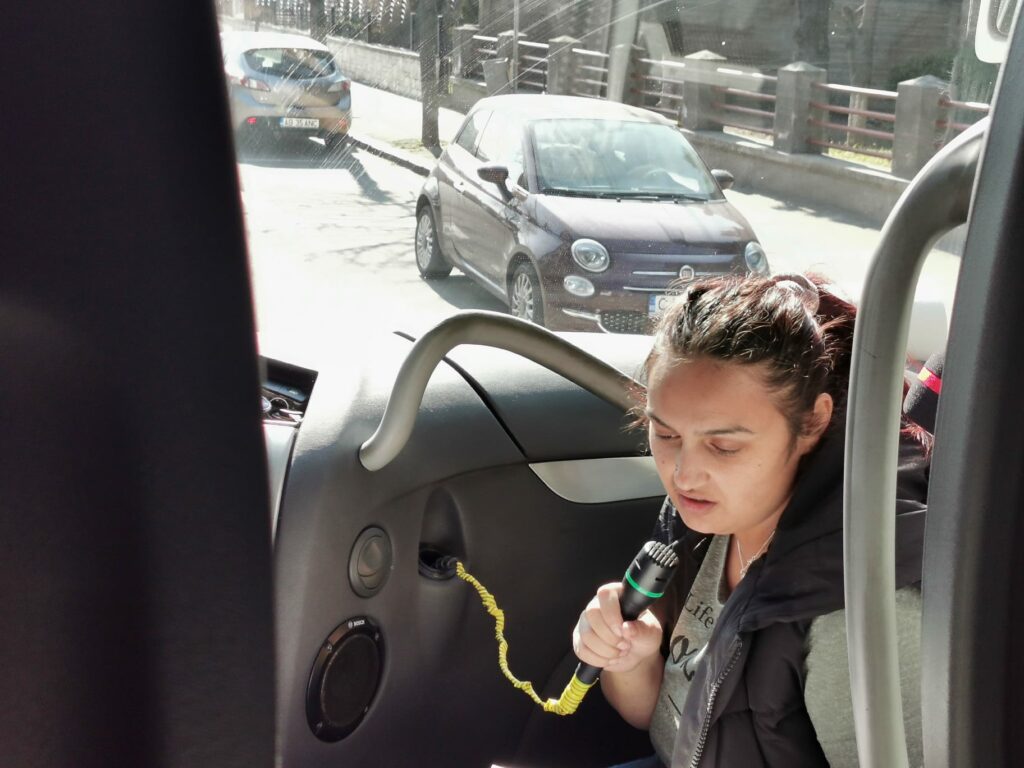
Source: Nóra Ugron
The second stop on our tour: Iuliu Coroianu street
In 2014 Cluj-Napoca city hall renovated a building owned by the public administration on Iuliu Coroianu street no. 5 and made 46 social housing units. The investment cost 5,906,528 lei. A large part of the investment was covered by European funding and the city hall’s contribution to the total sum was 94,800 lei. The homes were made available in 2015. In 2014 there were 321 requests for social housing, out of which 102 were declared not eligible. The non-eligibility criteria included locally after 2008, became more and more strict, even to the extent of going against Romanian housing law stipulations and anti-discrimination legislation.
In 2014 the public housing stock in Cluj included 1,554 homes out of which: 821 homes provided by the old (socialist) state fund, 461 social homes, 174 homes provided by the National Housing Agency, 30 employer-provided homes, 13 necessity homes (temporary housing provided to people who have lost their homes due to natural disasters or accidents), and 40 housing units in the modular homes located near the landfills of Pata Rât.
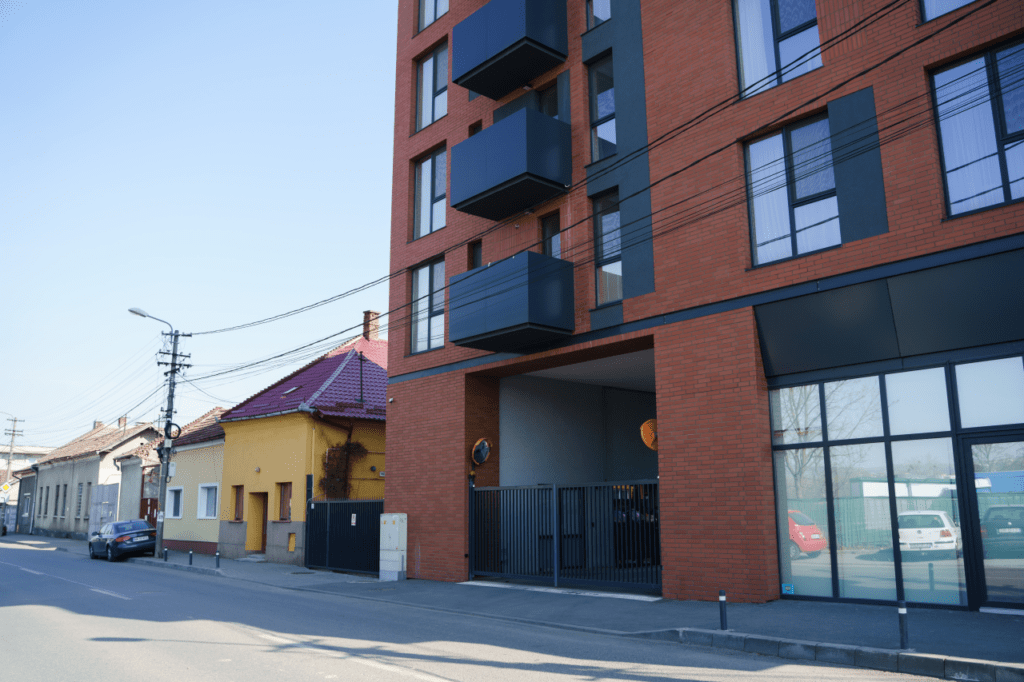
Source: Helga Tóth/Transtelex.ro
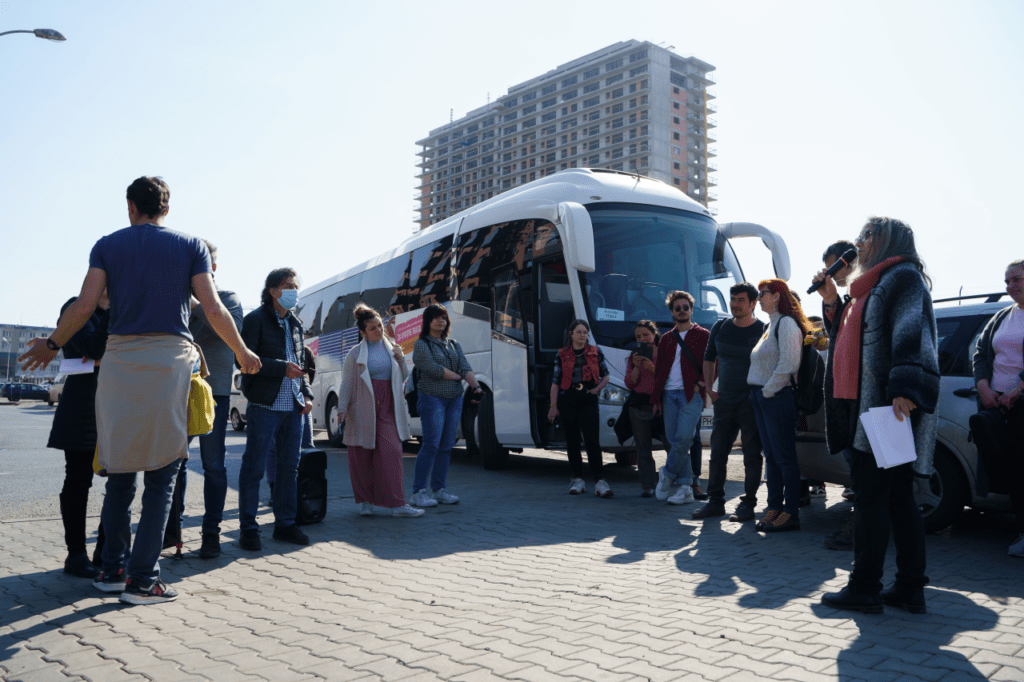
Source: Helga Tóth/Transtelex.ro
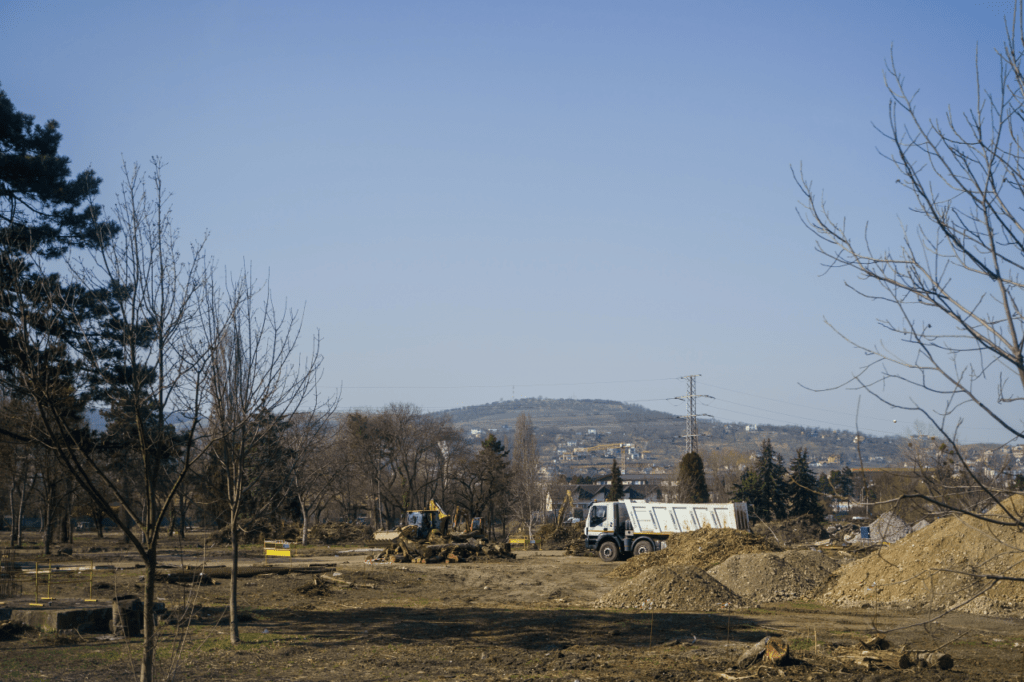
Source: Helga Tóth/Transtelex.ro
The third stop: the Abator (slaughterhouse) square area and Anton Pann street
We are now in the Abator square where we can see how since the 2000s real estate development gravitated towards the semi-central areas of Cluj. In the 90s development particularly meant including multiple former unincorporated areas in the city’s perimeter.
The 19th century slaughterhouse had already disappeared from the square that bears the same name (“abator”) at the beginning of the 90s. In 1995 business man Árpád Pászkány built an Opel Ecomax dealership here through Ecomax General Investments. In 2008 city hall gave the go-ahead for an old plan – a Zonal Urban Plan – to build the Riverfront business, commercial and residential center. The center was not made in the end and was sold along with the land to another investor in 2016. Since 2019 Mauerer Real Estate started building the 25 story tower named Mauerer Panoramic. Before that happened, in 2018, EBS Real Estate and Marina Properties had also started building residential complexes on Anton Pann street. They were not as tall as the ones built by Mauerer Real Estate, but tall enough to notice an obvious discrepancy between them and the old one-two-story buildings next door. This was just the beginning of further development in the old residential area and the velocity of the new constructions also depended on whether big developers managed to convince small landlords to sell their old properties. The rehabilitation of Feroviarilor Park is also part of this plan: a new park for the new home-owners that will raise the property value of both the land and constructions in the area.
In 2018, after 22 years of living there, the Lăcătuș family was evicted from a basement of a property located on Anton Pann street no. 22 that belonged to the city hall – we can clearly see how forced evictions and the lack of social housing in the city is connected to private real estate development and housing privatization interests.
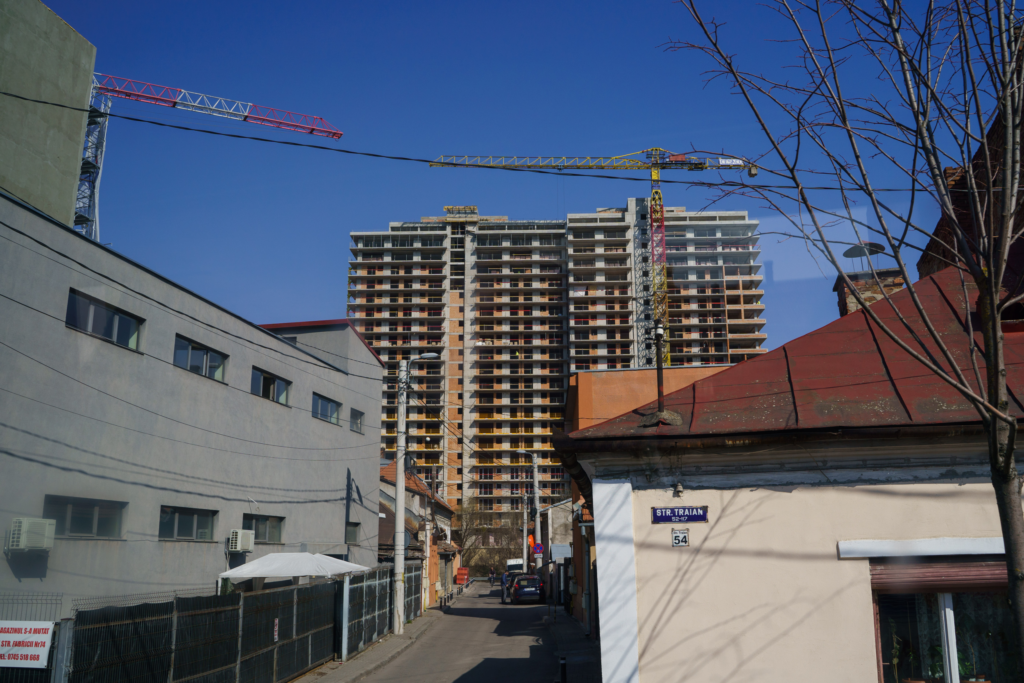
Source: Helga Tóth/Transtelex.ro
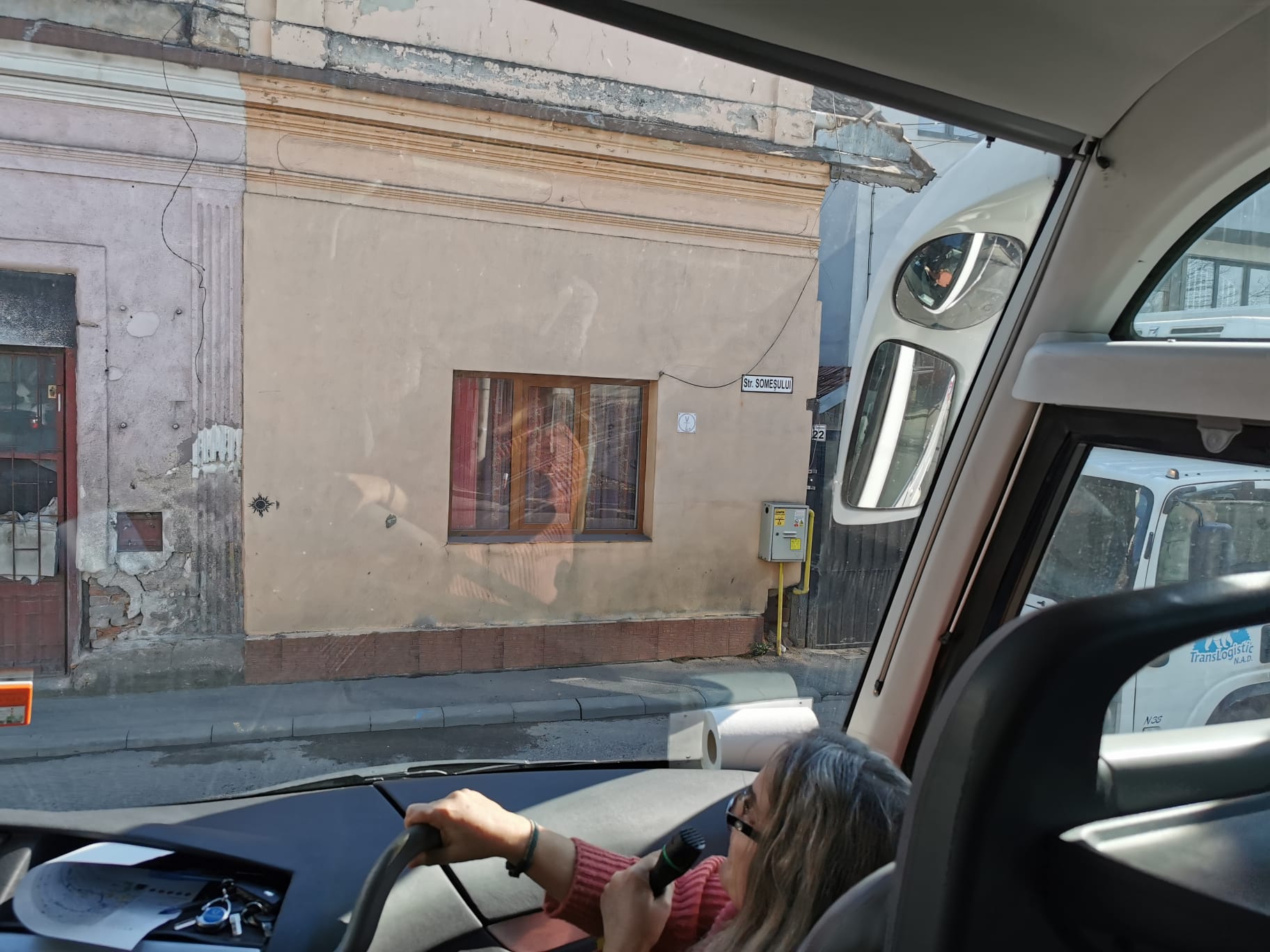
Source: Nóra Ugron
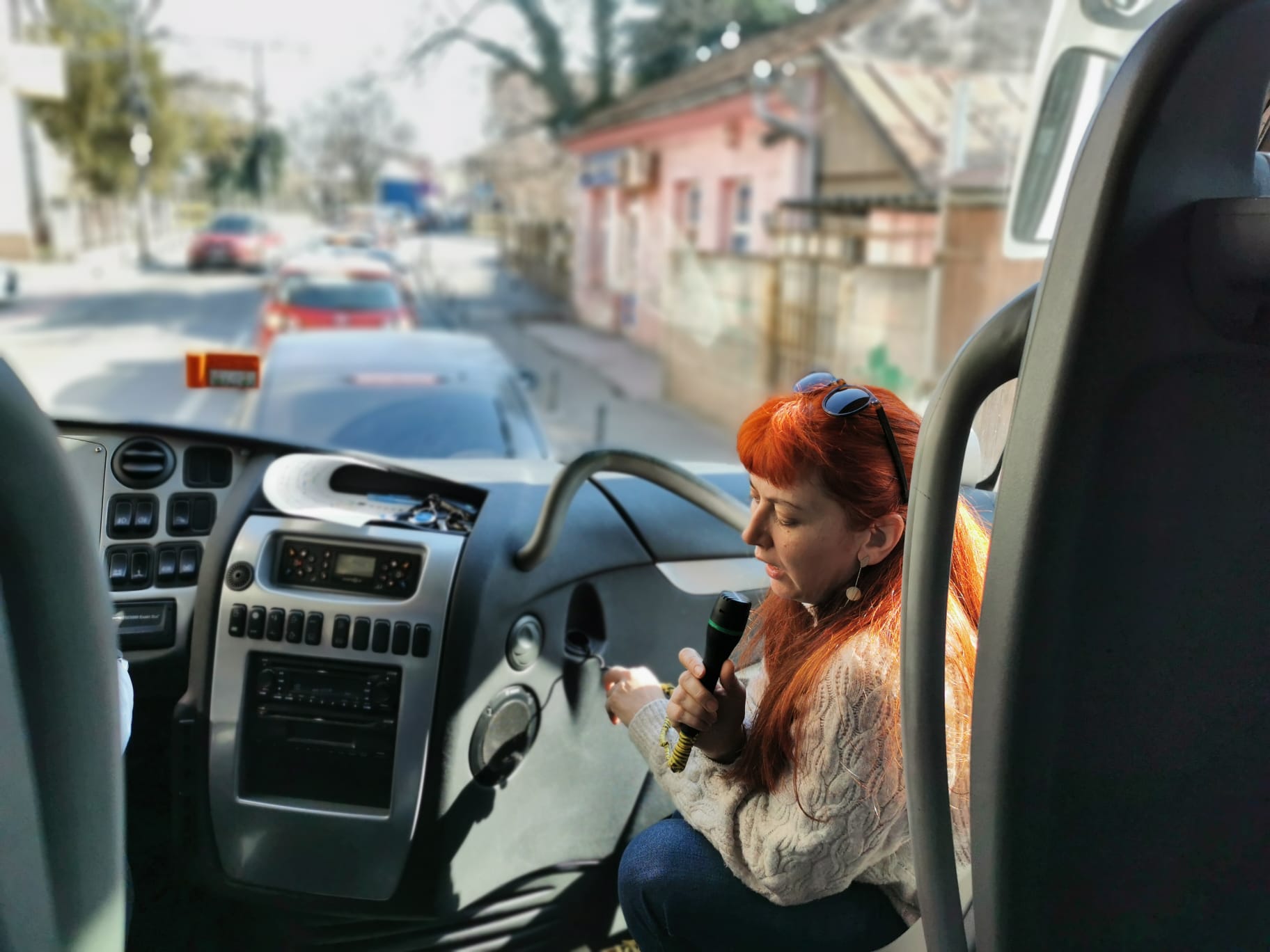
The fourth stop: Someșului street
Based on a Zonal Urban Plan from 2009 multiple constructions were built on this street in the last five years. The plan was approved by the Cluj-Napoca city council to benefit IMO Invest SRL who built a business center, business headquarters and residential units on Ploiești-Someșului streets. The urban restructuring of the whole area was also consolidated through the General Urban Plan in 2014. This allowed for the new real estate developments in the area to be made according to the old Zonal Urban Plan.
Therefore, in 2016 Napochim Real Estate got construction authorization for the Scala Center residential complex on Someșului street, where the Napochim factory formerly existed. In a similar fashion, through the investment of SDC Imobiliare, another factory warehouse on Ploieşti street was transformed in a residential building – this one even quicker.
Next to the Napochim factory on Someșului the old yellow building belonging to the former Flacăra factory was also transformed. It became an office building for the IT company IQuest that belongs to Taco Developments. Part of the land of the former factory is used by the SC Robert Bosch company, who built a research center there with an entrance through Constanța street.
City Casa made by SC Beyfin and Solaris Park (commercial and residential building) were also recently built on Someşului street. At the end of 2021 Hexagon City (through Arhimar architecture firm) started construction on the newest real estate development in the area, a 140 apartment building located at the intersection of Someşului and Lalelelor street.
Moreover, in the bus Miki Branişte told us about artistic spaces such as the Brush Factory (Fabrica de Pensule) that have been the victims of gentrification.
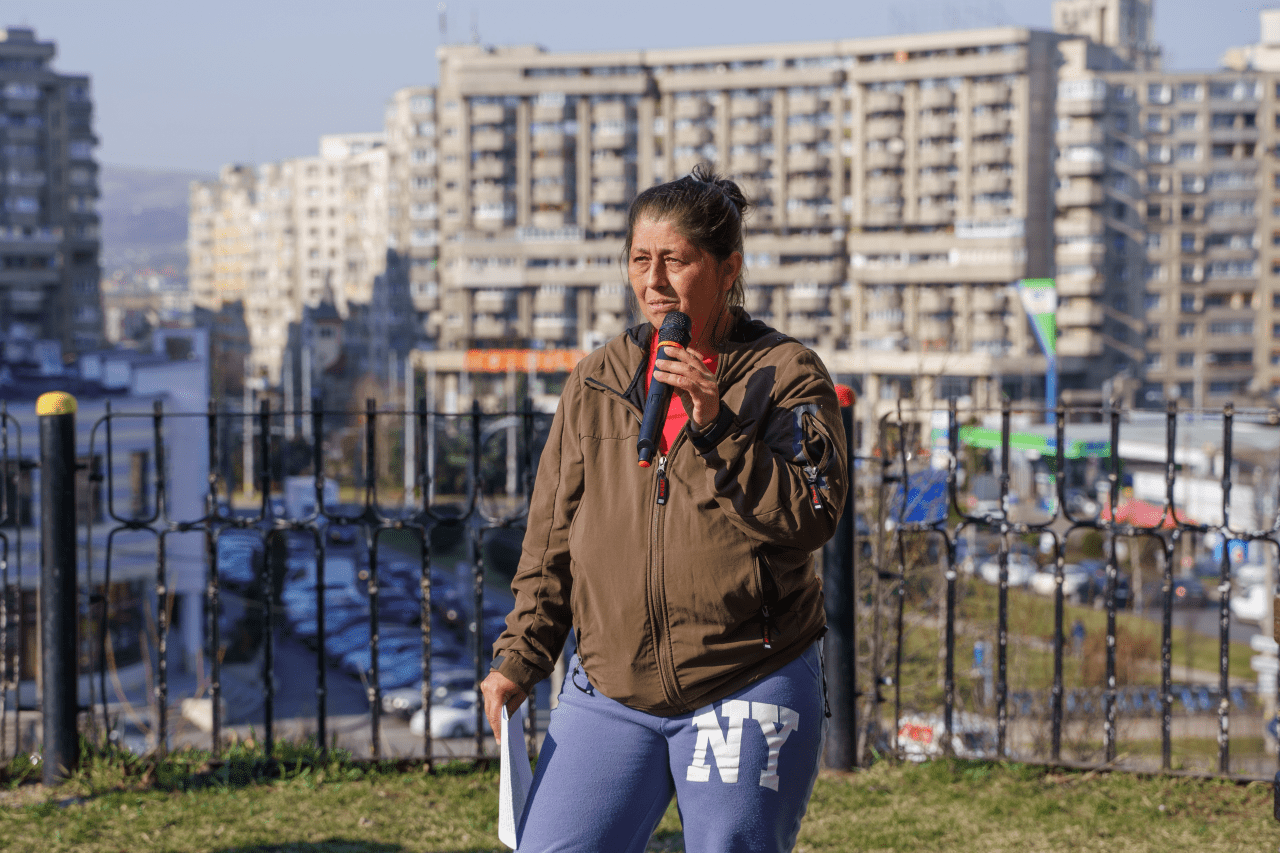
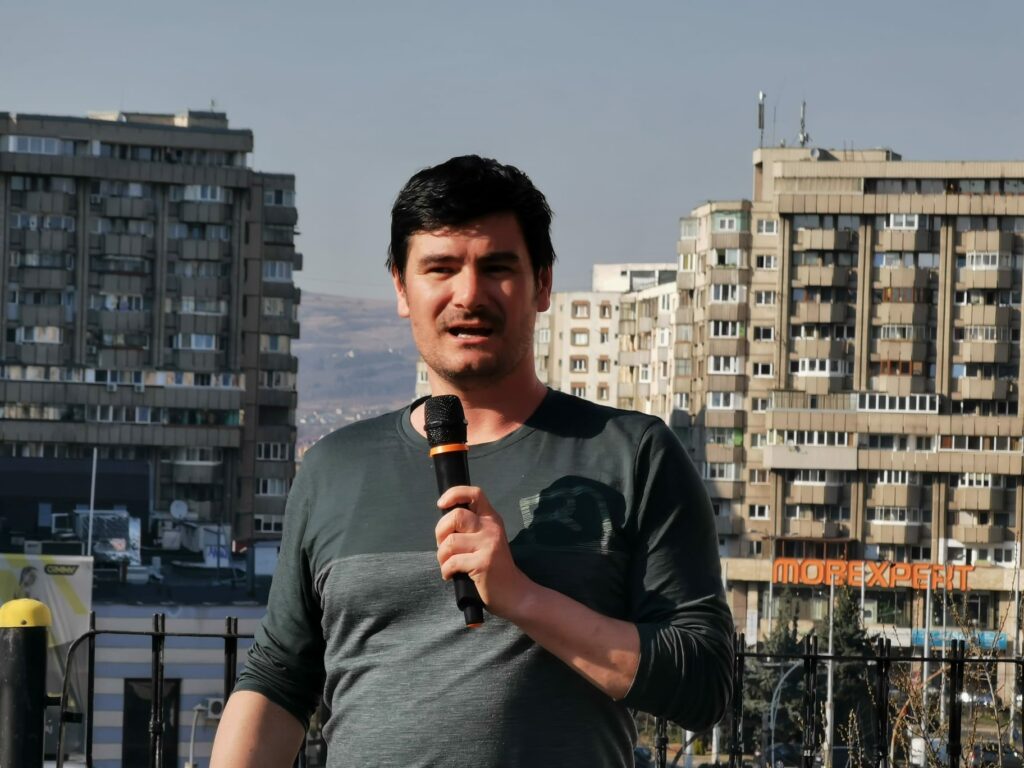
Source: Nóra Ugron
The fifth stop: Episcop Nicolae Ivan, former Coastei street from where 350 Roma people were evicted in 2010
Episcop Nicolae Ivan street was formerly known as Coastei street. Here the city hall evicted 350 Roma people in 2010 and forcibly relocated them to Pata Rât, close to the landfills. Before the eviction the “Octavian Goga” Cluj County Library and an office building initially made for Nokia were built nearby. New mansions were built shortly after in the area, including one belonging to former mayor Sorin Apostu. In 2010 and 2012 Transilvania Constructions built Dorobanţilor Residence, a twelve-story apartment building located on Dorobanţilor street no. 132-134. In 2011 in the same area the Faculty of Orthodox Theology, a branch of the Babeş-Bolyai University in Cluj built a new headquarters which also included a campus and a church. In 2016 the nearby public nursery “Vrăjitorul din Oz” became very valuable real estate.
For the last twelve years Coastei Roma Community Association, Desire Foundation, and Social Housing NOW! have been documenting the injustice of evictions through studies and video footage and have been commemorating the eviction of 17th December 2010 every year through various public events.
However our protests also spread general awareness. We fight against racism in the city, for social housing, for solidarity between ethnicities, for solidarity between tenants and evicted people. Because it’s not just the poorest who would need social housing in Cluj. There are a lot of young people starting their lives out, struggling to pay rent in a city that has become the most expensive one to live in Romania. A lot of them are leaving town because of that – the high cost of living is driving people out of the city. A lot of us and our children have been pushed outside of Cluj and we have to commute to work and school. And a lot of people live in overcrowded apartments.
Many who live in Cluj are unhappy with this situation, but most of them are ashamed to ask for social housing. It is, however, their right if their income is below average and they do not own any properties. Also social homes are good quality homes. There is no shame in asking for your rights, there is no shame in living in a social home.
Since we are here together I’d like to ask for your support in putting up an Eviction Monument here, on the former Coastei street. So that the local authorities never forget the suffering they caused by forcibly moving us near the garbage dump. And so that nothing like this ever happens to anyone again.
You might have heard of this plan. We introduced it during the “Where have the children disappeared from the couch?” exhibition. On 17th December we inaugurated the exhibit here, on Coastei street, then moved it to the “Lucian Blaga Central University Library” in February, and it is currently displayed near the modular homes in Pata Rât. On 8th April it will be part of a larger exhibit for the International Roma Day at Casa Tranzit.
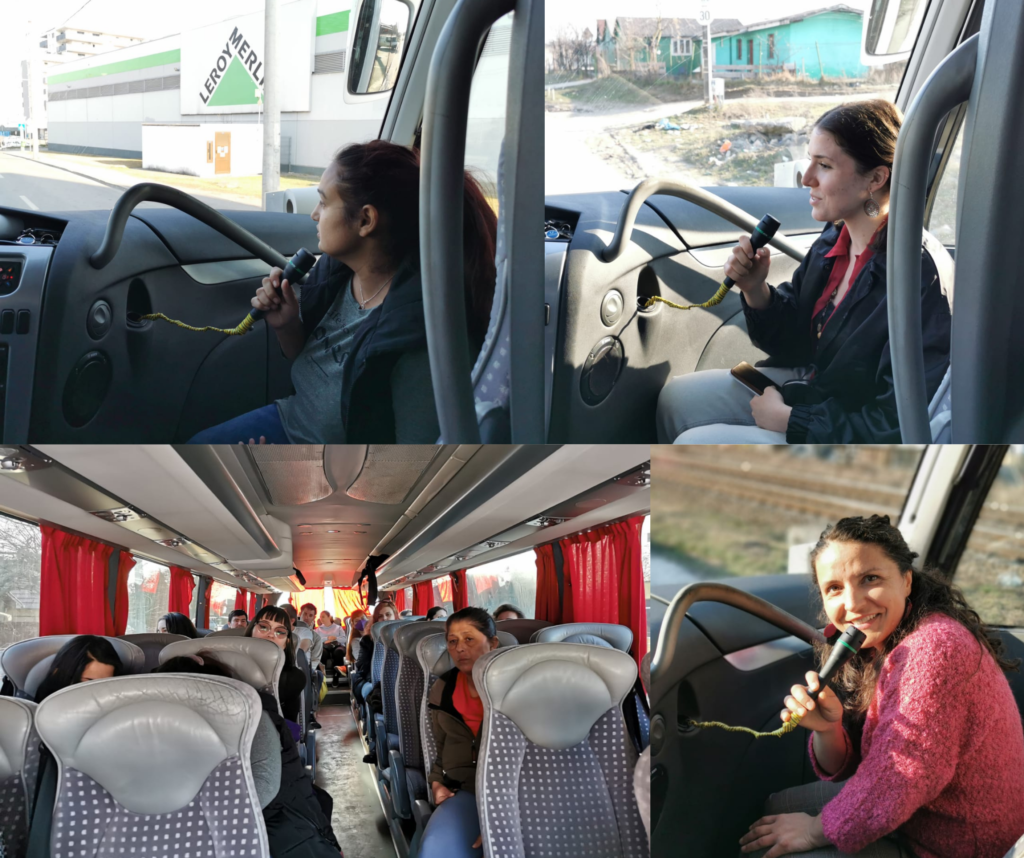
Source: Nóra Ugron
The sixth stop: Meșterul Manole street
We are now getting closer to Meşterul Manole street. We are currently on Aurel Vlaicu street which leads to the airport. There have been many property developments around the IRA bridge: Leroy Merlin, Lidl, Kaufland, and also new apartment buildings all under the name of Aurel Vlaicu Complex. It’s very expensive to buy an apartment here and the home owners are unhappy to live next to Meşterul Manole street no. 2. At this address there’s an old building provided by the old state fund where poor families live crammed into one-room apartments for which they pay rent to the city hall. Due to their financial struggles and the superficial ways in which the city hall has treated the housing issues here, local authorities have evicted three families from the building in the past three years and set in motion similar actions against six other families.
The area is known as a marginal urban one in the new Integrated Urban Development Strategy along with four other areas in the city. The city hall promises these will be gone by 2030. But how? Where? When exactly? What alternatives will be given to these families? Most adults living here are employed, most children go to school. So they are integrated, but cannot afford private rent. A lot of these people have disabilities. There are a lot of cases here that fit into what social assistance defines as a “vulnerable group.” And, according to social legislation, local authorities have certain obligations towards these vulnerable groups, such as providing adequate social housing and a social services package.
On the bus we also listened to people’s stories about housing: Iulia Cărtăleanu talked about the lack of student dorms in Cluj and Paula Boarţă shared some of the housing issues she encountered as a student and then tenant in the city.
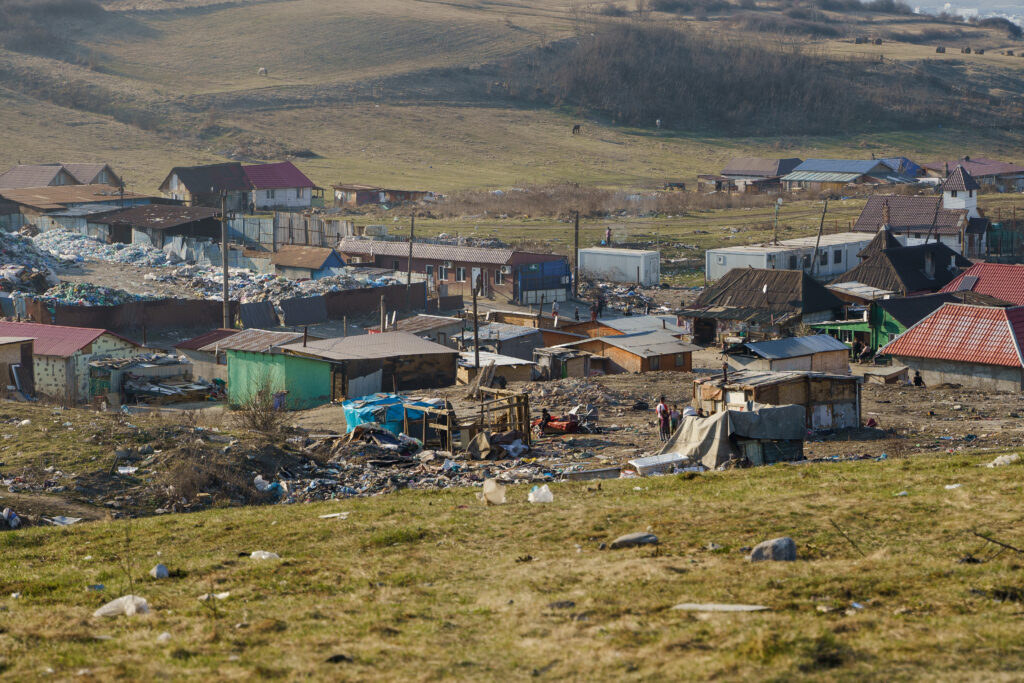
Source: Helga Tóth/Transtelex.ro
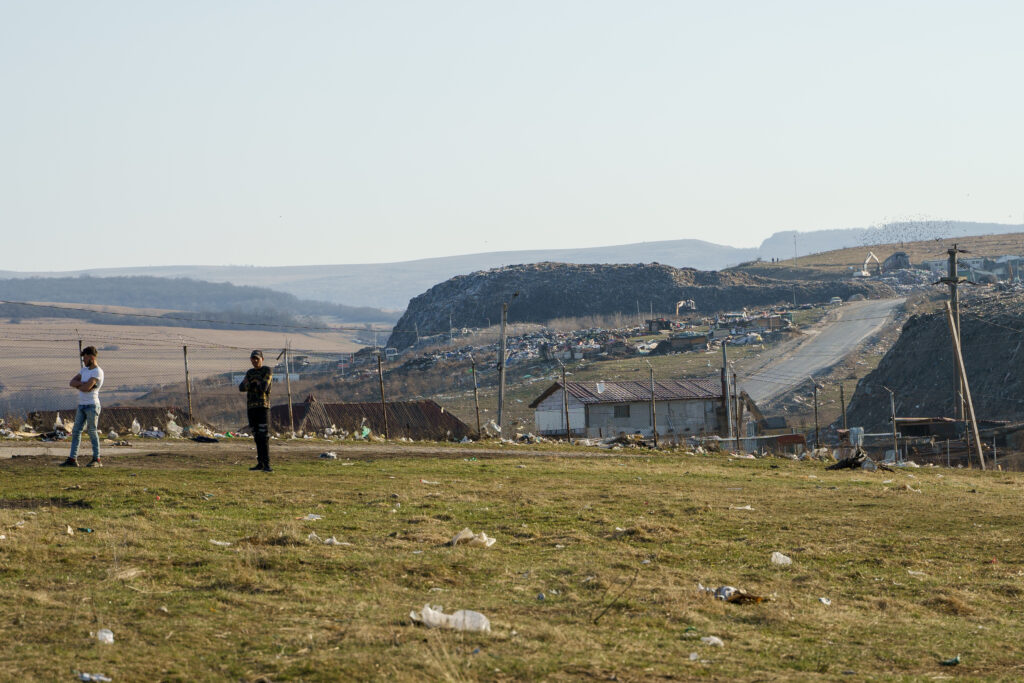
Source: Helga Tóth/Transtelex.ro
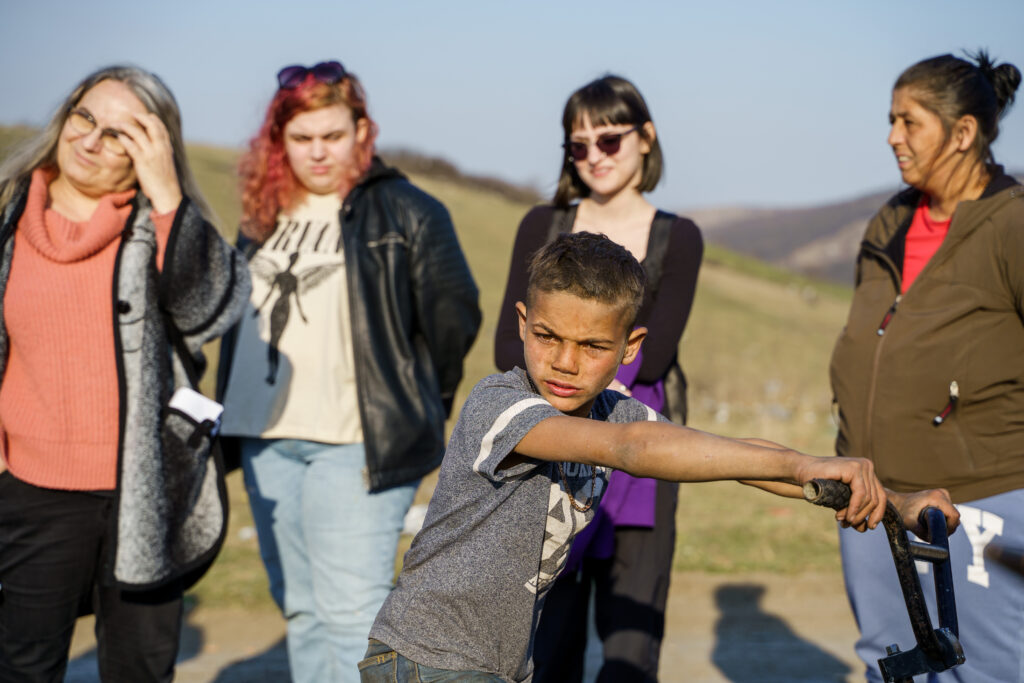
Source: Helga Tóth/Transtelex.ro
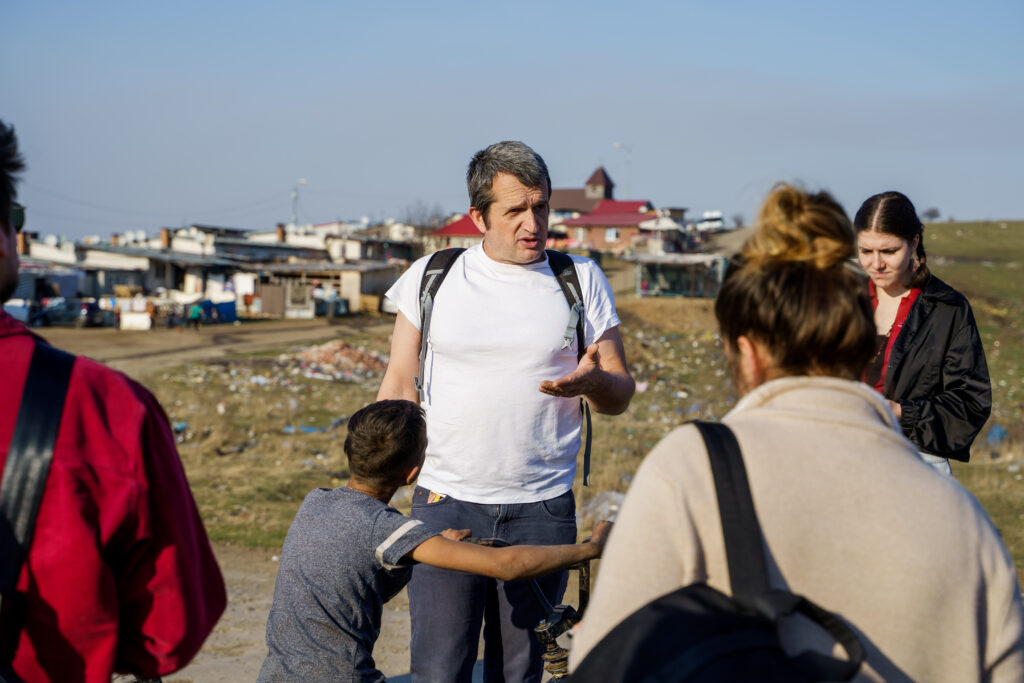
Source: Helga Tóth/Transtelex.ro
The seventh stop: the landfills in Pata Rât
In June 2021 Cluj-Napoca’s local council approved the Zonal Urban Plan to kick off the first stage of the mega-project “Transylvania Smart City.” It will be built on the Borzaş hill on a 34-acre land. This hill is located next to the still functional RADP garbage ramp. In December 2021 they approved the construction authorization for the first phase of the project. It will take up 4.6 acres and will include five apartment buildings with “smart” homes inside, a kindergarten and nursery, a shopping mall and a recreation area. The developers will do home deliveries by drone and people living there will be able to get to the city’s airport by cable car.
On the opposite hill, at a 800 m distance from the garbage ramp, the Roma people who were evicted from Coastei street in 2010 now live in 16 m2 modular homes built by the city hall. In between the two hills (on the former Pata Rât, now Platanilor street) on land owned by the Pro Roma Foundation there’s an informal fifty-year old settlement called Dallas colony.
For about two years now we’ve been hearing this promise from the city hall that “by the year 2030 Pata Rât will no longer exist,” a promise also officially written in the Integrated Urban Development Strategy 2021-2030. We wonder if it’s believable. And how does it connect to Transylvania Smart City? Or what hidden risks are there in wishing “it no longer existed”? Where will the people that live there go? Is their future disappearance connected to the new potential homeowners in Pata Rât?
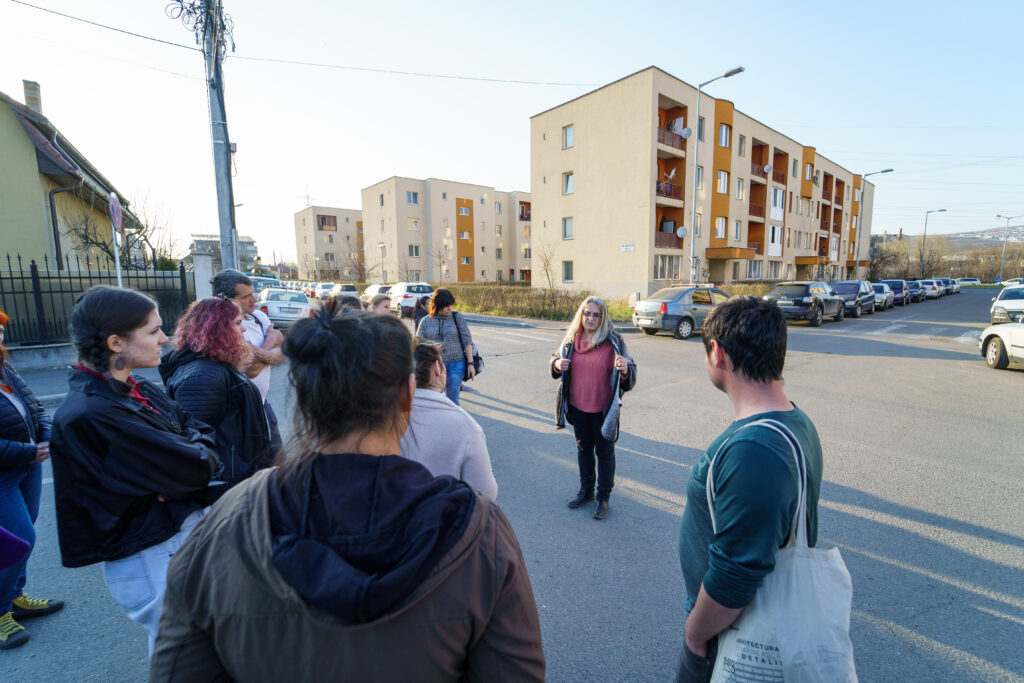
Source: Helga Tóth/Transtelex.ro
The last stop on our “Missing social housing” city tour: the social homes on Blajului/ Timișului streets (the former local flea market Oser)
In 2007 residents of Cluj have made 1,571 social housing requests. Nobody was declared non-eligible at the time. A year later 271 people received housing and this was possible because the city built multiple apartment buildings on the land on which the former flea market used to be (Blajului and Timișului streets).
We rightfully wonder: what happened to the other applicants? Why did the number of social housing requests drop after 2008 even if between 2008 and 2021 only about 120 new social housing units were built? A lot of people give up on applying because they know there aren’t enough social homes available. Everyone saw that between 2015 and 2020 the Cluj-Napoca city hall neither built nor renovated any social homes. There were about 400 applications per year out of which the authorities only approved approximately five every year. These five were available due to either the eviction or death of the former tenants.
A lot of public property buildings are still empty. A lot of the homes provided through the old state fund are left to deteriorate. The city hall wants to make them unavailable for housing.
We miss big social housing investments in Cluj, they are the only answer to the very real need for social housing. It’s time for the city hall to make them reality as the PNRR program now gives possibilities to build and provide housing for young and marginalized people. Without these big investments in 2030 we’ll see how the 1,500 social housing units the city hall promised were never actually meant to become reality.
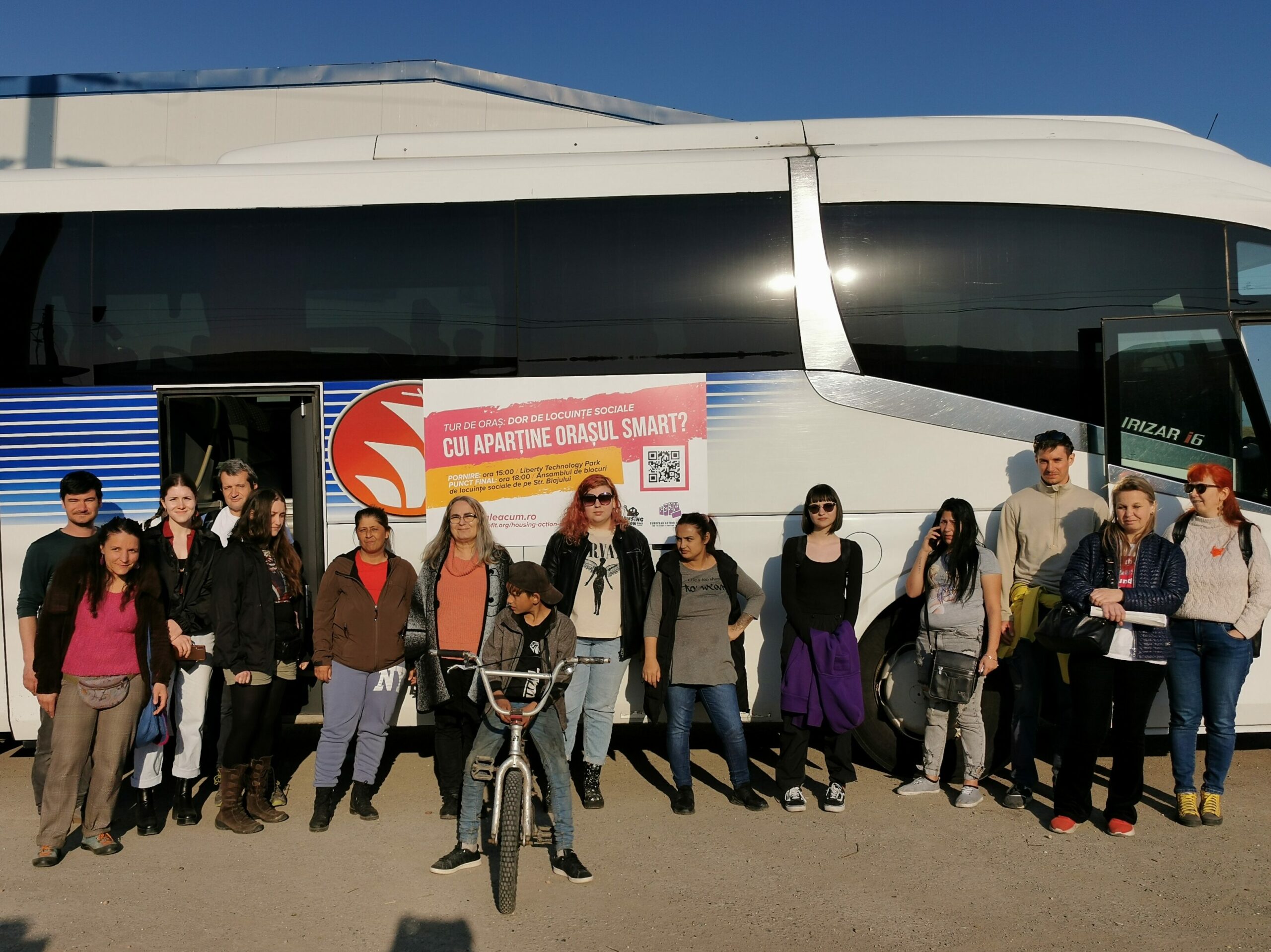
Source: Nóra Ugron

